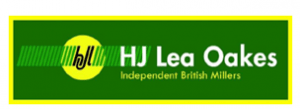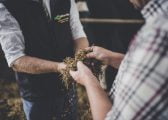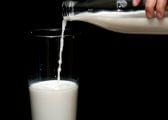LeaStrain Grass Seed
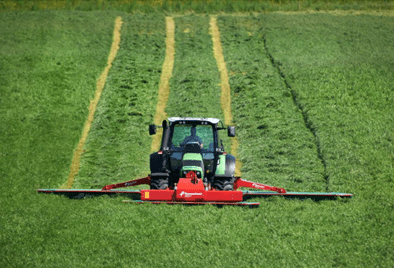
Why Leastrain Grass Seed??
- Quality mixtures
- Designed with the end user in mind
- Established and trusted brand. (you know exactly what’s in every bag of seed)
- Access to the very latest in grass seed technology
- High levels of customer support
- Long term supplier relationship
Species Summary
- Early Perennial only for early bite or early first cut silage but not in late areas
- Intermediate and Late Perennials best suited to most farm situations
- Late Perennials very dense and good for grazing
- Hybrid ryegrass is one of the grasses of the future and much better than Italian
- Festuloliums (Ryegrass Plus) for difficult, stressful situations and longer seasons
- Timothy great grass for cool wet conditions particularly for bulk on beef and sheep farms and where hay is the main fodder
- Cocksfoot only in drought conditions
- White clover for nitrogen and feed value but leaf size to suit purpose
- Red clover for high yielding short term cutting mixtures and rapid N fixation
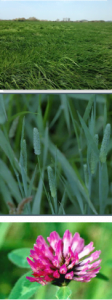
SPECIES in more detail:
Tetraploid/Diploid
- Present in all species of Ryegrass
- Perennial
- Italian
- Hybrid
- Different genetic makeup to Diploids (twice as many chromosomes)
- Large seed and aggressive establishment
- Bigger plants (They always look better)
- Broader leaves which have a higher moisture content
- Slightly higher yielding
- Less dense than diploids with more upright growth with fewer tillers
- Deep rooting and better suited to dry conditions
- High sugar content and so are very palatable and good for silage
Italian Ryegrass
- Short lived but high yielding
- 2 production years
- Good early spring, late summer and autumn growth
- Relatively late heading (same as Intermediate Perennials)
- Combines early bite and leafy first cut
- Relatively poor forage quality
Hybrid Ryegrass
- Maximum 3 production years
- Cross between Italian and Perennial Ryegrass
- Combines the advantages of Italian with the benefits of Perennial
- Italian benefits
- high yield
- good early spring and autumn growth
- Perennial benefits
- winter hardiness and persistency
- forage quality
Festulolium
- Greater stress tolerances than a Hybrid, Italian or Perennial Ryegrass
- Improved disease resistance
- Better persistency
- Varieties include:
- Becva Short Term Italian Type
- Perun Italian Type
- Perseus Italian Type
- Lofa Hybrid Type
- Hi-Past Perennial Type
- Fojtan Perennial Type –Brand new grazing type!!!
- Hykor Fescue Type
Early Perennial Ryegrass
- Heading dates – 6 May to 16 May
- Start spring growth early in the year (about 2 weeks earlier than Intermediate and Late Perennials)
- Good for early bite for sheep
- Good for early silage cuts
- Heads quickly after an early graze
- Bad for late silage cuts (heads too early)
- Bad in late areas / high altitude (head early with no bulk)
Intermediate Perennial Ryegrass
- Heading dates -18 May to 31 May
- Slower to start growing in early spring than Early Perennials
- Similar annual yields
- Similar first cut yields but 2 weeks later
- Suits most farms except where early bite is required
- Makes up the biggest proportion of cutting mixtures
- One of the most important groups of grass seed
Late Perennial Ryegrass
- Heading dates in -30 May to 15 June
- Slower to start growing in early spring than Intermediate Perennials and much slower than Early Perennials
- Similar annual yields
- Dense prostrate growth giving good sward density
- Particularly good for long term grazing
- One of the most important groups of grass seed
Timothy
- Very winter hardy
- Thrives under cold and wet conditions
- Good early spring growth
- Relatively late heading 13 to 26 June (same as Late Perennials)
- High yielding
- Very palatable but poorer forage quality than Ryegrass
- Very good for producing bulk for beef and sheep particularly in later areas and for hay making
White Clover
- Very palatable and animals eat more of a higher quality feed and do better as a result
- Deep rooting with creeping growth habit (stolon’s)
- Nitrogen fixing root nodules can fix up to 160 units N per acre per year
- Poor competitor with grass as it is sensitive to shading
- Performs well in drought situations and in mid summer through to autumn
- Classified into 3 categories according to leaf size
- Small leaved = grazing
- Medium leaved = dual purpose
- Large leaved = cutting
- Optimum pH 5.8 –6.5 and relatively high demand for P & K
- Does not like permanently wet conditions
Red Clover
- Relatively large seeds and aggressive establishment
- Very high yielding with erect growth habit
- Deep rooting from tap root
- Nitrogen fixing root nodules contribute more quickly than in white clover
- Very palatable, high protein and mineral content
- Primarily for cutting and lacks persistence under hard grazing
- Short lived 2 –3 years
- Relatively low in water soluble carbohydrate (grass sugars), so is best grown with high sugar varieties and species to help silage fermentation
- Oestrogen problem for breeding animals. It is best to avoid grazing with breeding sheep for 6 weeks prior to and 6 weeks after tupping
LeastrainMixture Purity
| PossibleWeed Seed Numbers per acre | UK Minimum Purity Standards | Leastrain MINIMUM purity |
| Docks | 1,250 | 0 |
| Couch | 30,000 | 2,500 |
| Blackgrass | 25,000 | 2,500 |
| TOTAL | 56,250 | 5,000 |
91.11% Less Weed Seeds per acre
Like Germination there is a minimum purity standard set for grass seed certification.
The standard still allows for large amounts of grassland weeds to be planted when a reseed takes place.
DLF ensure that Leastrain mixture purity far in exceeds the minimum standards required for seed certification.
For more information please phone 01270 782210
